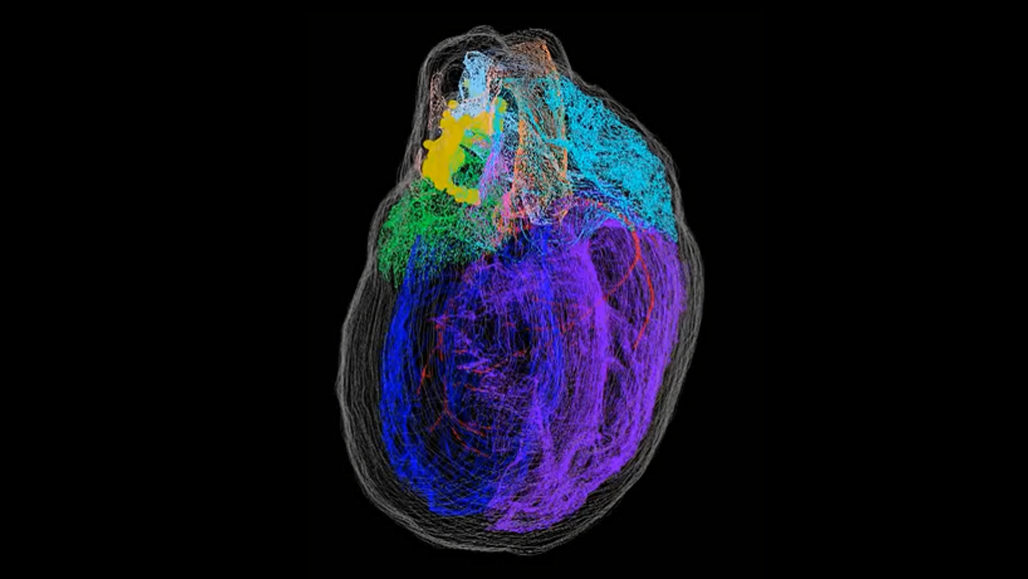 Nerve cells (yellow) that make up a heart's "brain" cluster around the top of this reconstructed rat heart, near where blood vessels enter and exit the organ. Other colors show the contours of distinct heart areas, such as the left atrium (green), right atrium (teal), left ventricle (blue) and right ventricle (purple).
Nerve cells (yellow) that make up a heart's "brain" cluster around the top of this reconstructed rat heart, near where blood vessels enter and exit the organ. Other colors show the contours of distinct heart areas, such as the left atrium (green), right atrium (teal), left ventricle (blue) and right ventricle (purple).
The heart has its own "brain." Now, scientists have drawn a detailed map of this little brain, called the intracardiac nervous system, in rat hearts.
The heart's big boss is the brain, but nerve cells in the heart have a say, too. These neurons are thought to play a crucial role in heart health, helping to fine-tune heart rhythms and perhaps protecting people against certain kinds of heart disease.
But so far, this local control system hasn't been mapped in great detail.
To make their map, systems biologist James Schwaber at Thomas Jefferson University in Philadelphia and colleagues imaged male and female rat hearts with a method called knife-edge scanning microscopy, creating detailed pictures of heart anatomy. Those images could then be built into a 3-D model of the heart. The scientists also plucked out individual neurons and measured the amount of gene activity within each cell.
These measurements helped sort the heart's neurons into discrete groups. Most of these neuron clusters dot the top of the heart, where blood vessels come in and out. Some of these clusters spread down the back of the heart, and were particularly abundant on the left side. With this new view of the individual clusters, scientists can begin to study whether these groups have distinct jobs.
The comprehensive, 3-D map of the heart's little brain could ultimately lead to targeted therapies that could treat or prevent heart diseases, the authors write online May 26 in iScience.
